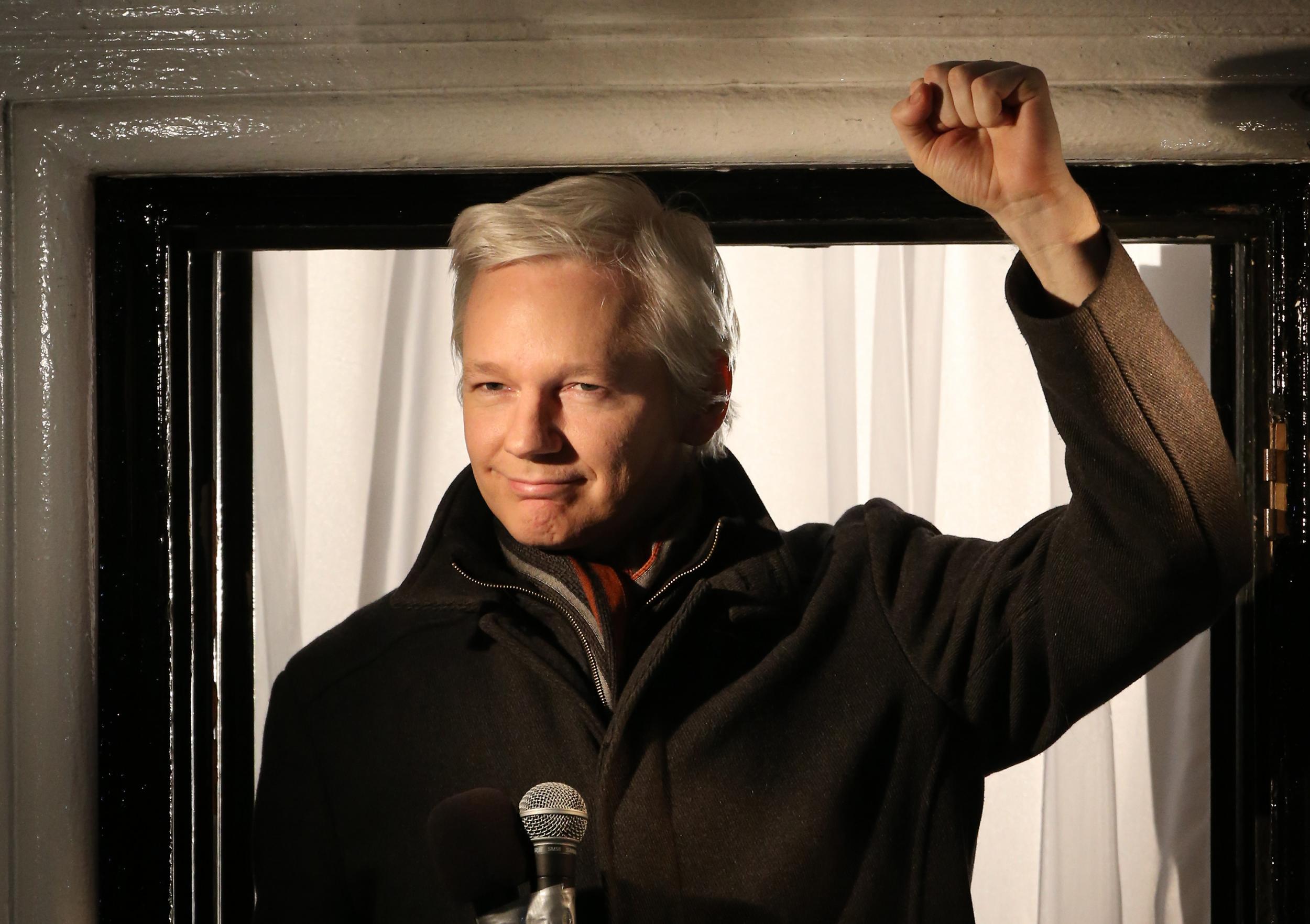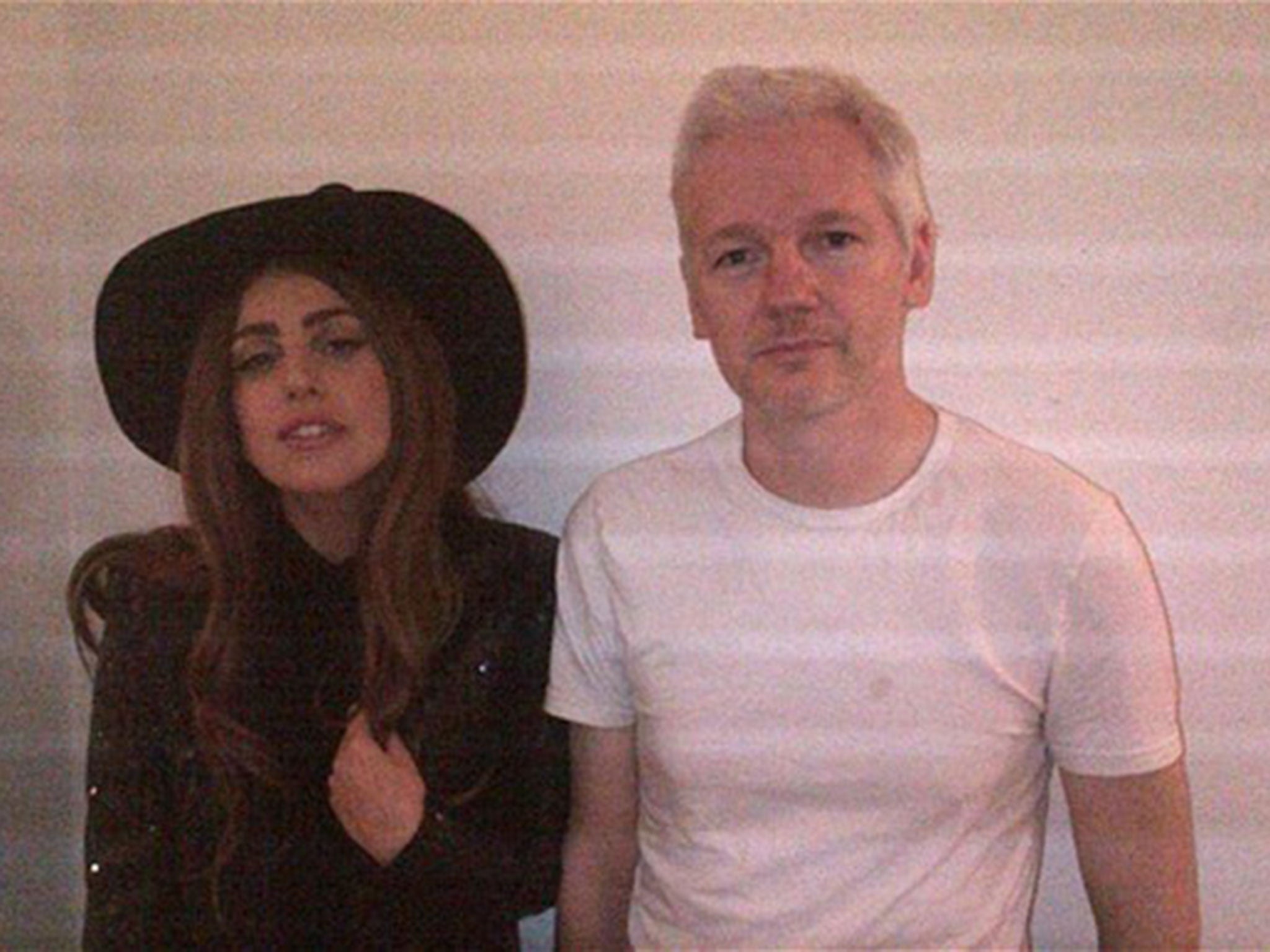What has Julian Assange been up to in the Ecuadorian embassy?
The Big Question: What we know about the Wikileaks founder's self-imposed confinement

Your support helps us to tell the story
From reproductive rights to climate change to Big Tech, The Independent is on the ground when the story is developing. Whether it's investigating the financials of Elon Musk's pro-Trump PAC or producing our latest documentary, 'The A Word', which shines a light on the American women fighting for reproductive rights, we know how important it is to parse out the facts from the messaging.
At such a critical moment in US history, we need reporters on the ground. Your donation allows us to keep sending journalists to speak to both sides of the story.
The Independent is trusted by Americans across the entire political spectrum. And unlike many other quality news outlets, we choose not to lock Americans out of our reporting and analysis with paywalls. We believe quality journalism should be available to everyone, paid for by those who can afford it.
Your support makes all the difference.Why are we asking this now?
A United Nations panel considering the apparent "unlawful detention" of Julian Assange has reportedly ruled in favour of the Wikileaks founder.
Assange was granted political asylum in the Ecuadorian Embassy in London in 2012 to avoid extradition to Sweden. He is wanted for questioning over allegations of sexual assault but denies the claims.
In 2014, he filed a complaint against the UK and Sweden and said he was being “arbitrarily detained” in the Embassy as he could not leave without being arrested.
The UN, which has been investigating the claim, has not confirmed the report and is due to publish its decision on Friday.
Assange says he will voluntarily leave the embassy if it rules against him.
Why is he in there?
In August 2012, Sweden issued an arrest warrant for Assange over two separate allegations - one of rape and one of molestation.
On 19 June 2012 - a month after the UK Supreme Court had ruled he be extradited - the Ecuadorian government announced he had applied for political asylum.
On 16 August, they granted his request - and Assange entered the building in central London where he remains to this day.
The 44-year-old believes that if he travels to Sweden to answer the allegations, he may be extradited to the US to face trial over the publication of classified US military and diplomatic files.
He says he has sought asylum in the Ecuadorian embassy rather than comply with the order.
What has he been doing in there?
He has now spent more than three years living in the embassy building in Knightsbridge. The embassy has no outside area and he has no access to fresh air or sunlight.
He has said he believes it "too dangerous" for him to step out on to the embassy balcony over fears he may be shot.
Ecuador has requested that Mr Assange be permitted outdoor exercise without risking his political asylum, a website set up to call for justice for Mr Assange claims, but the UK has reportedly refused.
He says the embassy staff are now "like family" - they have lunch together and celebrate each other's birthdays.
He lives in a small office room converted into living quarters, with a bed, telephone, sun lamp, computer, shower, treadmill and small kitchenette.
The activist has previously mentioned watching Australian TV series The Rake and films such as Argo and Zero Dark Thirty.
Why can't he leave?
Even if the UN rules in his favour, Assange is likely to be arrested on the spot by British authorities the moment he steps outside the Ecuadorian Embassy building.
He could then be extradited to Sweden for questioning.
What have people been saying about him?

The website set up to document his 'house arrest' at the embassy - which was on 1,885 days and counting at the time of writing - says it is awaiting formal confirmation of the UN panel ruling.
The WikiLeaks Twitter account posted a series of tweets about the UN panel ruling on Thursday, saying it was also awaiting formal confirmation.
He has also received regular visits from a variety of high-profile supporters, including Lady Gaga, Eric Cantona, Pamela Anderson, Yoko Ono, Sean Lennon, Maggie Gyllenhaal, John Cusack and rapper MIA.
But those who criticise him point to the cost to taxpayers of the Met Police "guarding" him - at least £10m.
What happens next?
If he wins the UN ruling, he could use it to pressure the British Government to allow him to leave the embassy.He could simply take his chances and leave the embassy, despite the fact he is almost certain to face arrest.
He has previously tweeted that if the panel rules against him, he will leave the building and accept being arrested.
Join our commenting forum
Join thought-provoking conversations, follow other Independent readers and see their replies
Comments